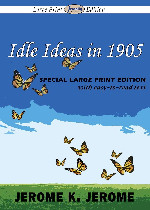
Idle Ideas in 1905(1905年的杂想) 立即阅读
Back in 1905 Jerome K. Jerome shared his thoughts on a variety of subjects, including "Should Women Be Beautiful?", "Should Soldiers Be Polite?" and "Is The American Husband Made Entirely Of Stained Glass?". Each subject is analysed and commented on in the witty and satirical style we've grown to expect from the author.
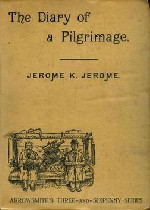
Diary of a Pilgrimage(朝圣路日记) 立即阅读
Diary of a Pilgrimage is a novel by Jerome K. Jerome published in 1891. It tells of a trip undertaken by Jerome and his friend "B" to see the Oberammergau Passion Play in Germany. They travel by train from London Victoria to Dover and have a rough overnight crossing of the Channel to Ostend and thence by train to Cologne where they spend a night in a hotel. The following day they visit Cologne Cathedral before catching the train to Munich, travelling alongside the Rhine. They spend Sunday in Munich where Jerome practices his German before catching a train to Oberau and then a carriage to Oberammergau to see the play. They return via Heidelberg.
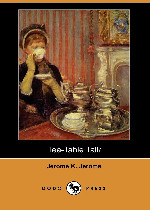
"Tea-table Talk" is an imaginary conversation between the writer and a number of un-named characters at the afternoon tea table. The Woman of the World, the Old Maid, the Girton Girl, the Philosopher and the Minor Poet wax lyrical on subjects like marriage, art, society and politics.
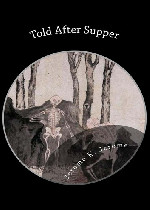
Told After Supper(晚饭后的一席话) 立即阅读
It was Christmas Eve. I begin this way because it is the proper, orthodox, respectable way to begin, and I have been brought up in a proper, orthodox, respectable way, and taught to always do the proper, orthodox, respectable thing; and the habit clings to me. Of course, as a mere matter of information it is quite unnecessary to mention the date at all. The experienced reader knows it was Christmas Eve, without my telling him. It always is Christmas Eve, in a ghost story.
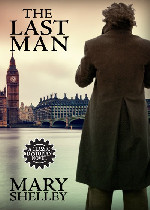
The Last Man is a post-apocalyptic science fiction novel by Mary Shelley, which was first published in 1826. The book tells of a future world that has been ravaged by a plague. The novel was harshly reviewed at the time, and, except for a 1924 silent film based on it, was virtually unknown - having been eclipsed by Shelley's more popular works - until a scholarly revival in the 1960s. It is notable in part for its semi-biographical portraits of Romantic figures in Shelley's circle, particularly Shelley's late husband Percy Bysshe Shelley and Lord Byron.